A Complicated Road: The Search for Indigeneity in Lebanese Wine
Wine & Spirits Magazine recently published a piece I wrote on 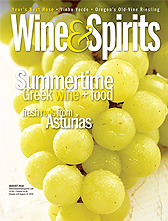 Lebanese wine: “Cinsault Rising: Lebanon’s Search for a Flagship Red.” I am grateful for the opportunity to write about the wines of Lebanon, something I have paid close attention to for a long while. In 2001, as I wrote the first of my seven editions of Food & Wine Magazine’s Wine Guide (2002-2008), I insisted that book cover wines of the Middle East, the Caucuses, and eastern Europe, regions that had been ignored previously. (That was well before the cool-kid interest in amphora-fermented Georgian wines, a topic I’ll revisit soon. In the meantime, Alice Feiring’s book on the subject provides a fascinating, personal take on the wonderful wines of that country).
Lebanese wine: “Cinsault Rising: Lebanon’s Search for a Flagship Red.” I am grateful for the opportunity to write about the wines of Lebanon, something I have paid close attention to for a long while. In 2001, as I wrote the first of my seven editions of Food & Wine Magazine’s Wine Guide (2002-2008), I insisted that book cover wines of the Middle East, the Caucuses, and eastern Europe, regions that had been ignored previously. (That was well before the cool-kid interest in amphora-fermented Georgian wines, a topic I’ll revisit soon. In the meantime, Alice Feiring’s book on the subject provides a fascinating, personal take on the wonderful wines of that country).
Those who know me aren’t at all surprised in my interest in Lebanese wine. Despite what many assume because of my profession and my visage, I am not Lebanese, but, rather, Palestinian – of mixed heritage, ethnic, Arab and Armenian, and confessional, Muslim and Christian. I mention these identities not because of any inherent relevance to the current subject, but because they undermine the complex world of assumptions make – mostly by non-Levantines – about the cultural practices people from that part of the world engage. That is, Middle Easterner society has for millennia, been cosmopolitan, with multiple ethnicities, languages, religions, and social groups living with one another on a daily basis. Like any other part of the world, there are periodic conflicts between various groups. Sometimes these conflicts have become gruesome. But, more often than not, the lines between conflicting parties cannot be drawn so easily between one religious or ethnic group, or other.
The various traumas suffered by Lebanon in the 20th and 21st century, illustrate the point. During the country’s 16-year civil war that lasted from 1975 to 1991, conventional perception in the West, particularly in the United States, reduced the war to one between Muslims and Christians. In fact, while one side, the right wing Lebanese Front (LF), was composed largely of Maronite Christians (though not totally), the other, the Lebanese National Movement (LNM), a coalition of left wing movements, multi-confessional in principle, Sunni Muslims, who were numerically dominant, Greek Orthodox Christian, Greek Catholics (Melkites), Druze, some Shiites, especially those lead by Musa al-Sadr, founder of Amal (the Shiite community largely depoliticized at the time and stayed neutral. Al-Sadr withdrew his support as the Iranian revolution took place, and was widely to have been thought to have ‘disappeared by Libya’s Muamar Ghadhafi in 1978), and a number of Maronites, too. (It should be added that many in these multiple communities did their best to stay out of the conflagration).
Various factions of the secular Palestine Liberation Organization (PLO) were also part of the movement, taking a leading role until, at least, the Israeli invasion of Lebanon in 1982. Generally speaking, the Lebanese Forces welcomed or actively collaborated with the Israeli army. But, alliances shifted during the war according to immediate need. At some times, emergent Shiite militias battled Palestinians. At others, they fought the Israelis. The Syrian military entered the conflict in 1976 with the tacit understanding of the Israelis to keep the Palestinians from defeating the Lebanese Forces. Then, Syria supported the LNM and the PLO (sort of). Afterward, they supported an inter-Palestinian revolt against Yasir Arafat and his leadership of Fateh, the largest bloc within the PLO, which had been largely exiled to Tunisia. Israel occupied the south of Lebanon and sponsored the so-called South Lebanese Army (SLA) composed largely of poor Shiite soldiers lead largely by Maronite officers. But, the SLA – and Israel, were pushed out of Lebanon largely by the Shiite militia Hizbullah in coordination, sometimes, with another Shiite militia, Amal. Oh, and, some Palestinian fighters, too. Somewhere along the way, Amal fought battles against the Palestinians. And Hizbullah and Amal sometimes came to blows. Did I forget the Armenians? Largely neutral, though some were clearly allied with the especially left-oriented sectors of the PLO, and some were partisans of the right-wing Lebanese Forces. We can add the Kurds, to the mix, too. And, among (right wing) Maronites? Often divided between rival, feuding clans, or, arriviste groups, sometimes co-operating, sometimes in battle against one another. In the present day, the once militantly anti-Palestinian/anti-Syrian general, Michel Aoun, supported by Iraqi Ba’athist President Saddam Hussein, a Sunni Muslim who hated Syrian Ba’athist President Hafez al-Assad, came around years after the civil war to lead a Maronite party that is in a pragmatic alliance with Hizbullah, both supported by Syria. His strongest rival within the Lebanese Forces, Samir Ja’Ja’ (also spelled ‘Geagea,’ or, as one of my favorite commentators on the Arab world, Asad Abu Khalil says, “‘Ga’ga’ in Egyptian dialect”), who occasionally had the operational support of Syria, then went strongly anti-Syrian, and has been supported in the last few years by Wahabist Saudi Arabia (itself strongly anti-Syrian, and anti-Hizbullah), is now endorsing Michel Aoun (still pro-Syrian-regime and allied with Hizbullah) for the presidency of Lebanon. Meanwhile Hizbullah is grown lukewarm in its affections for Aoun, All to say, assumptions don’t last long in Lebanon.
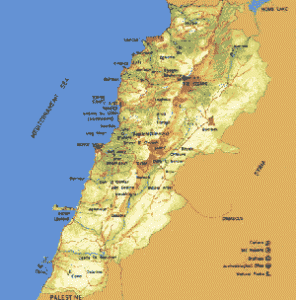
Well, except for one: Lebanon was, and remains, a mess.
What does this have to do with wine? When I first proposed my Lebanon wine story to Wine & Spirits, I envisioned that it would be around the search for the great, indigenous Lebanese red grape. I knew that there was some interest in the matter, but up until the present, I hadn’t heard of any results. The lack of one struck me as odd for several reasons. For one, there are at least two white wine grapes that have been identified as indigenous: Obeideh (alternatively spelled Obeydi, Obeida, Obaydi, Obaydeh, etc.), and Merweh (aka Merwah, Merwi, Merwey, etc.). For another, tiny Lebanon has an incredible diversity of terrains and microclimates, at least 14 in a country that is two-thirds the size of Connecticut. And, for yet another, Lebanon, like Syria, like the Anatolian highlands and plains, and, most famously, the steppes of the Caucuses, currently Georgia, Armenia, and Azerbaijan, is where wine culture started several millennia ago. And, finally, Phoenician merchants and colonists who established capitals in what is today Lebanon, spread wine and vine culture throughout the Mediterranean basin. As the Wine & Spirits article says, the Phoenicians brought wine to France.
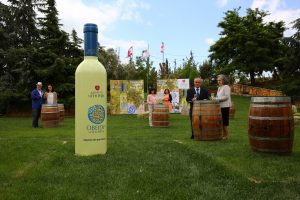
Over the years, I raised the issue about an indigenous red several times, not the least of which to Serge Hochar, the late, charismatic driver behind Château Musar. Musar’s Château white, a wine that Serge was especially proud of, is a blend of both Merweh and Obeideh. In her tome Wine Grapes (Ecco, 2012), Jancis Robinson, et al. identify the former as Sémillon, the latter as Chardonnay. But, DNA evidence indicates that Obeideh, at least, is its own thing. I have not yet seen any definitive reports that prove the same of Merweh, but Gaston Hochar, one of Serge’s sons and now director of Musar, is adamant that it is, indeed, autochthonous to Lebanon. Because Merweh favors the mountains, as opposed to the Beqaa Valley where the great majority of Lebanon’s wine grapes come from, it is used by only a small number of wineries, among them Musar and Tazka. (Last year, Isabel Kershner of the NY Times wrote a piece talking about the providential discovery of an ‘Israeli’ indigenous grape called ‘Merwi,’ asserting that Israeli winemakers could now make wine like they did during the time of Jesus. Lebanon, which didn’t fit into Kershner’s obsessive need to proclaim Israeli exceptionalism, was not mentioned, though a side note was made of the fact that Palestinians have been using the grape for a time. Yeah, like for several millennia.)
About an autochthonous red, Serge told me more than once, “We’re looking, somewhere in the mountains, and we’ll find something.” Unfortunately, Serge never definitively found that grape before he passed at the end of 2014. Son Gaston laments that his father simply was too busy with other matters to undertake the sustained effort a discovery would require.
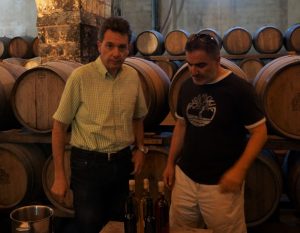
That said, both Gaston and Tarek Sakr, Musar’s winemaker since, have remained dedicated to the quest and made reference to a red grape discovered nine years ago in the mountains above Byblos, an ancient town on the coast north of Beirut, that holds promise. Yet they are tight-lipped about what it might be. “We don’t have it in quantities that can even make enough wine for meaningful experiments,” Tarek says. Sensing my disappointment, Gaston promises that will change soon.
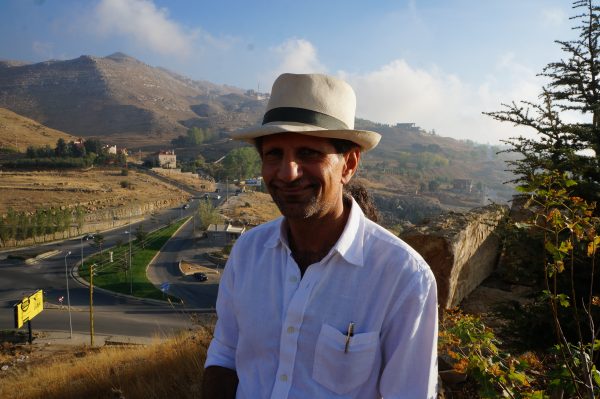
Musar is not the only winery in Lebanon interested in an autochthonous red grape. Ramzi Ghosn of Massaya says that he and his brother Sami found red grapes (again, unnamed) in the village of Baskinta on Mount Lebanon that seemed promising, but ultimately proved disappointing. “Not even good for blends,” laments Ghosn, “but we are sure there is something else.”
Aziz Wardy of Domaine Wardy points to Assouad karech, an indigenous red wine grape identified by the French Institut National de Recherche Agronomique (INRA), but he knows no one who has used it.
Resources for research are a major problem. The trauma and destruction of 15 years of civil war, 20 years of Israeli occupation with several subsequent attacks, and a 30-year Syrian military presence, plus multiple assassinations of political leaders, partisan tensions, corruption, the general dysfunction of the Lebanese state, and now, spill-over from the civil war in Syria, have made it nearly impossible for there to be sustained research into local viticulture. In 2000, the Lebanese parliament authorized the creation of an Institut de la Vigne et Vins to be established the following year. It took until 2012 for it to be formally established, but without a budget. A project to do a real study of local viticulture needs state support. “And, we don’t even have a state,” declares Hochar. (Lebanon has been without a president for over two years). In the meantime, the trade group Union Vinicole du Liban (UVL) has formed a committee of five wineries—Musar, Wardy, and Châteaux Ksara, Kefraya and St Thomas—to study indigenous grapes in coordination with France-based Wine Mosaic.
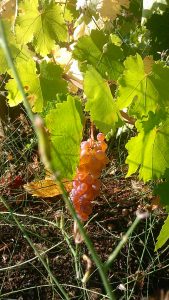
There is a lot of work to do. While local white grapes Obeideh and Merweh are in commercial production, 22 grape varieties in total have been identified by the French Institut National de Recherche Agronomique (INRA), as autochthonous to Lebanon, including some red grapes. Many of these are table grapes, or used for distillation. Others, well, no one really knows, because sustained research has not yet been done.
This uncertainty, ironically, offers some Lebanese winemakers certain intriguing possibilities. During my visit to the country in autumn 2015, two, Ramzi Ghosn of Massaya and Faouzi Issa of Domaine des Tourelles independently rejected the idea that common Mediterranean grapes in Lebanon – Cinsault, Carignan, Grenache, or Mourvèdre – are without question, foreign to Lebanon. “We just don’t know,” says Issa, “we haven’t done the proper DNA tests or comparisons. Maybe, these grapes really did start here.” In any case, there is no question that Lebanon’s Mediterranean climate has provided a hospitable home to these varieties since at least the establishment of Lebanon’s modern wine industry by French Jesuit missionaries in the 1850s. And, as my story in the August issue of Wine & Spirits indicates, some have become effectively ‘indigenized.’
There is far more to say about Lebanese wine and the history, politics, and culture that surround it. Please check back in future for more thoughts on this fascinating subject.
Find the Cinsault Rising Story in the August 2016 issue of Wine & Spirits Magazine here.




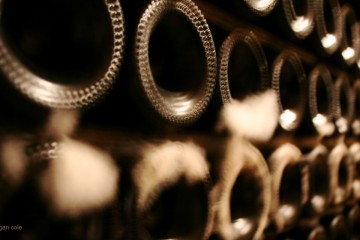
No Comment